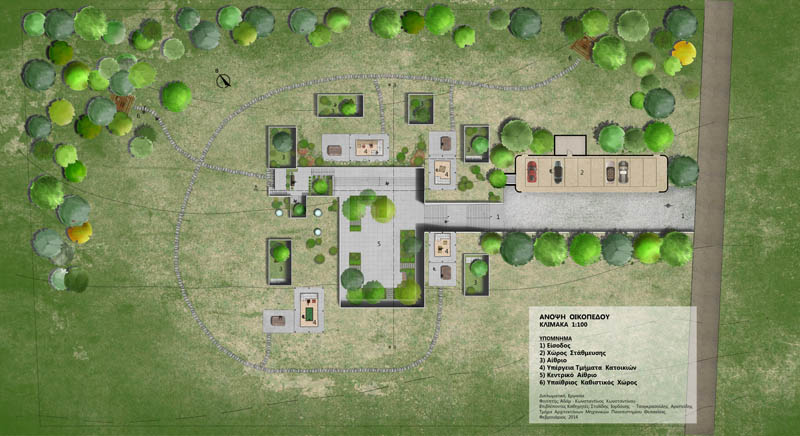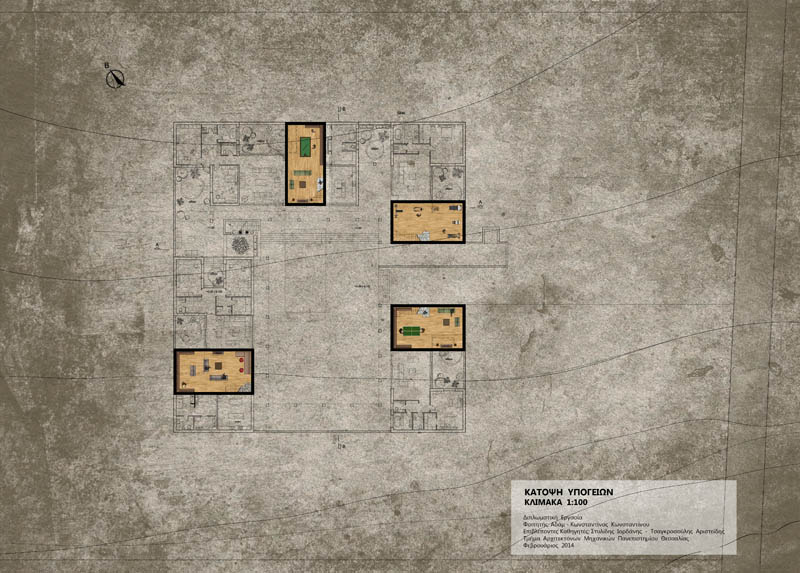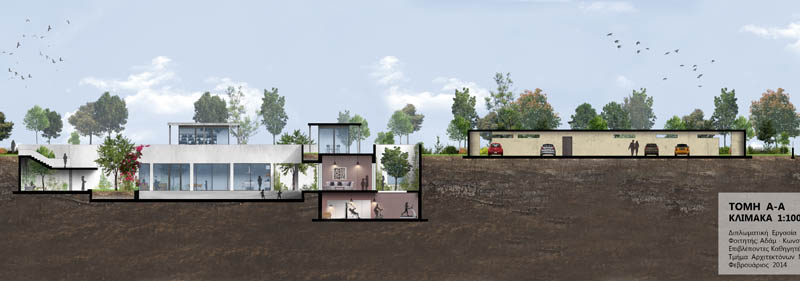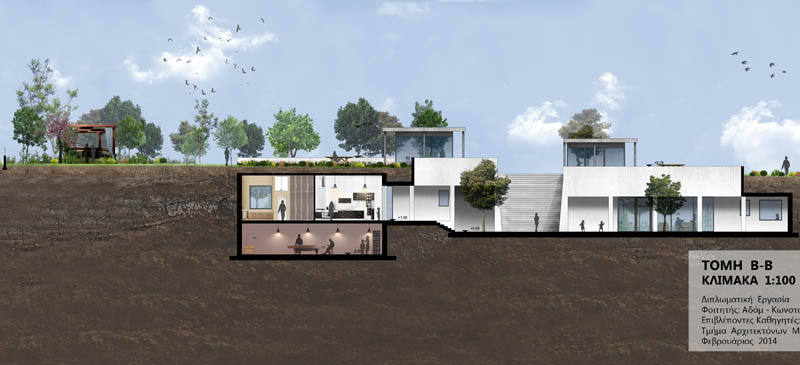











The Subject of this dissertation
The focus of this dissertation will be in the research and study of an underground housing complex based around a large atrium, just outside of the city of Larisa and the exploration of the links that are created in an environment with multiple floor levels and varying degrees of privacy. At the same time, great consideration is being put into the size of the complex’s energy footprint and the strategical planning of the houses so that the earth’s capacity for conservation of energy is being used, along with the provision of wind and solar-ray shelter.
Location
The site is located 1km from the University Hospital of Larisa, just outside of its south-western borders. The area around the site is mostly comprised of large agricultural fields. The northern part of a hill has been selected as the site, so that it is protected from north chill winds and to provide the necessary incline so we can bury the housing complex underneath but still have space to create small elevations between areas.
Case study
In this site there will be modern version of a multi-generation family, which is a model that was the norm in the Greece’s recent past. In this case we will have two families with two children each, living alongside two more elderly couples. These people are going to live together to help and support each other, while strengthening the family bonds.
In the past these relations were not necessarily the product of care and honesty, but in some cases were a need to overcome the hardships of life. Such a need also begin to be identified in this age, if not only the need to be closer to each other and to family.
Function and Living
This symbiosis doesn’t function in the same way as in the past, but follows the rules and needs of today. For this reason, we strive to create a gradual change in privacy, from the central courtyard to the main housing area and from there on to each house’s private courtyard and then to the space above ground.
Topography of the area and Energy Savings
The site, with its difference in elevation, was purposely chosen in order to provide the incline needed for the arrangement of the houses in such a way that it would create levels. The orientation of the site and of the houses in it, was informed by the natural properties of the area, to maximise natural lighting, however that may be achieved in an earth sheltered building, the larger part of which is in direct contact with the ground.
However, the greatest concern was to strike a good balance between satisfying the need for connecting the inner with the outer space and the need to minimise the houses' energy footprint while maximising the conservation of energy that the earth amply supplies. Moreover, the courtyard and the generally narrow depth of the house floor plans, cross-sectional currents will encourage the circulation of air, providing drafts during the summer.
The energy study was done by constructing the 3D model inside Design Builder, an energy evaluation program. The minimum requirements by the Code of Energy Performance of Buildings (K.EN.A.K.) were used for infiltration, HVAC air supply, number of people and required lighting. After finishing all the buildings' energy evaluation, the U values get switched with the minimum allowed values, thus creating an energy model of the reference building (minimum allowed values for our building). This way, it is possible to directly compare temperature diagrams, energy demand and loads for every house individually, so we can get a better sense of how much energy the building is going to be saving, along with the size of the HVAC required in each case.
Ultimately, it's not just about energy savings and cutting down the cost of running. An earth-shelter provides comfort with ease, in the form of very low air temperature influx throughout the year, when compared to a regular building. This is the effect of the energetic inertia of the earth's mass and also the thermal mass properties of the building, something reference building does not have.
Supervisors: Tsangrassoulis Aris, Stylidis Iordanis
Reference Number: 481

